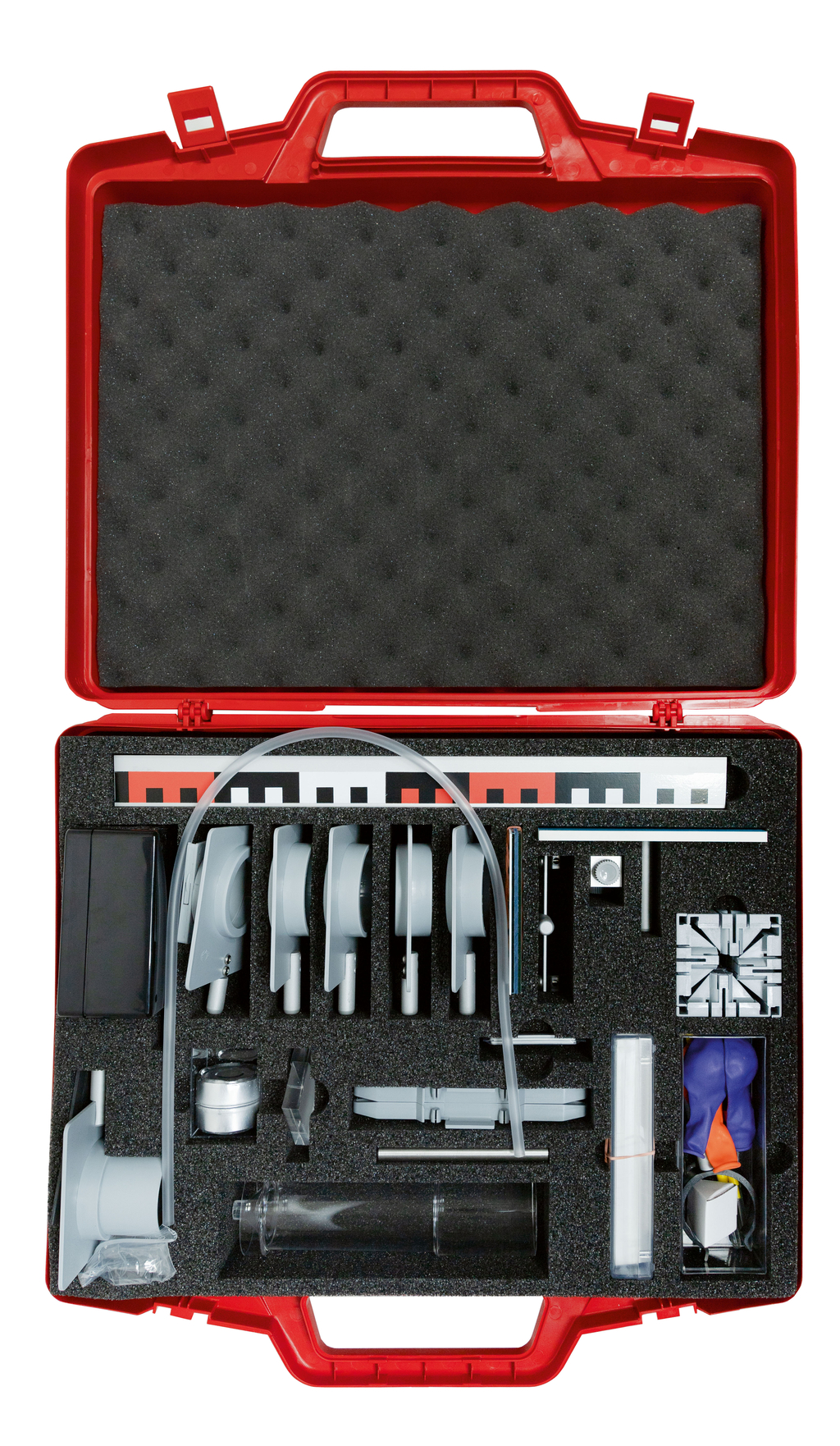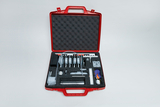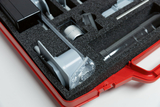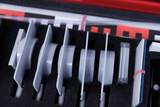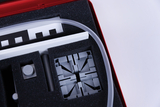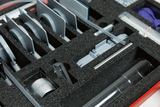Students kit What you feel, what you see, what you hear
This kit contains equipment and resources for scientific experiments covering multiple disciplines to perform simple experiments on three of the five senses, touch, hearing and sight. Some simple experiments are used to study the propagation of light, the sense of sight and the function of key optical equipment. Others investigate the creation and propagation of sound waves.
The possibilities of this set are rounded out by experiments on the sense of touch and perception of heat.
Age 11-14
Materials for 1 work group or demonstration
The students investigate the sensitivity of the skin using a test tube brush.
Dissecting needles are used to test whether the touch on the surface of the body is always felt in the same way on different parts of the body.
In this experiment, different material samples are placed on the table and a student is blindfolded.
The students investigate how light propagates.
The students investigate the course of light with the help of a slide holder.
In this experiment, the light effect is observed on a white screen and on a mirror.
In this experiment, a tea light is arranged upside down on the table and the course of the light in front of and behind the tea light is observed.
With the help of a mirror, the light is redirected onto a white screen.
With the help of an aperture, the students can collect or disperse the light.
In this experiment, a camera box is used to observe the effect on a lit tea light.
This experiment is intended to illustrate the conditions in a normal-sighted eye. By trying it out with a ground-glass screen, the students can now observe the effects of no longer being able to see clearly.
This experiment explains the principle of the camera and its lens.
We will shortly provide you with a description of the experiment at this point.
A pair of binoculars is built with two different lenses. In this experiment, an object is viewed through the lens arrangement and with the naked eye.
This experiment deals with the principle of the microscope.
We will shortly provide you with a description of the experiment at this point.
We will shortly provide you with a description of the experiment at this point.
In this experiment, students observe sound waves with a tuning fork.
We will shortly provide you with a description of the experiment at this point.
We will shortly provide you with a description of the experiment at this point.
The students test the different heat sensations using the profile splint and their own cheek.
In this experiment, students learn how mirror images are created.
In this experiment, light is shone through an optical body. The students can observe that light can change its direction.
In this experiment, students study the human eye and recreate it with a lens.
In this experiment, students investigate the different distances between the lens of the eye and the retina.
A celestial telescope is built with two different lenses. In this experiment, an object is viewed through the lens arrangement and with the naked eye.
We will shortly provide you with a description of the experiment at this point.
We will shortly provide you with a description of the experiment at this point.
- 1 × Hole diaphragm, 4 mm dia.
- 1 × Mirror, plane, glass 90x90x2 mm
- 1 × Screen and mirror holder with short rod
- 1 × Bosshead with slit
- 1 × Stand rod 100x10 mmØ stainless steel
- 1 × Camera-Box
- 2 × Plastic box, smooth 64x64x15 mm
- 1 × Table with rod
- 1 × Screen white, plastic 90x90x1 mm
- 1 × Lens in frame, biconvex f=+100 mm, w.short rod
- 1 × Aperture and slide holderwith short rod
- 1 × Colour slide, microscopicpreparation
- 1 × Storage box, red 430x330x99 mm
- 1 × Filter tube, transparent
- 1 × Foam insert for 22018 420x325x65 mm
- 1 × Screen, ground glass, 90 x 90 mm
- 1 × Prism, equilateral, 25x25 mm 3x60°
- 1 × Slide with arrow motif
- 2 × Dissecting needle, 140 mmstraight with cap
- 1 × Rail, 360 mm w.blockscale
- 1 × Slit double diaphragm, 1 slit/3 slits
- 1 × Lens in frame, biconvex f=+50 mm w.short rod
- 1 × Optical lamp, students type with short rod
- 1 × Holding clip on rod, 45 mm Ø (rod: 60x10 mm)
- 1 × Carton for storage box, 481x425x107
- 1 × Lens in frame, biconcave f=-100 mm, w.short rod
- 4 × Clamp slider
- 1 × Flexible hearing tubing 630 mm
- 1 × Tuning fork, 95 mm long not tuned
- 1 × Screen translucent, plastic 90x90x1 mm
- 1 × Lens in frame, biconvex f=+200 mm, w.short rod
- 1 × Foam insert, 430x320x40mm
- 1 × °Material patterns, set of 14 pcs.
- 1 × Test tube brush
- 1 × Rubber balloons, 100 pcs.
- 1 × Cuvette
- 1 × Spring steel strip with oscillation head, 300 mm
- 1 × Ray optics models glass, set of 5 pcs.
- 1 × Plastic box 140/50/35 mm
- 2 ×
- 11 ×
- 1 ×
- 1 ×
- 2 ×
